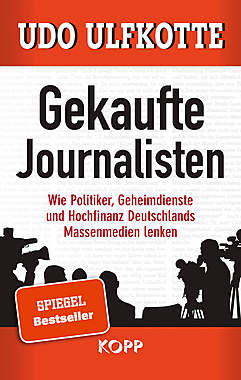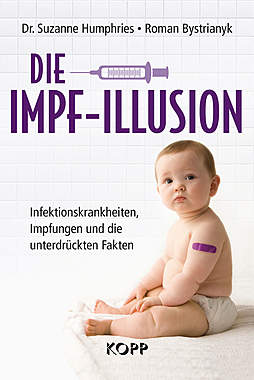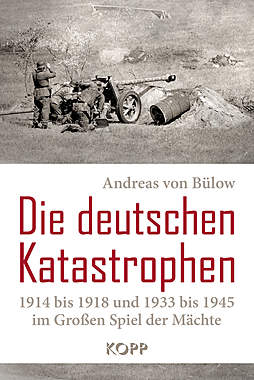- Wie man Kriege provoziert und Weltpolitik"MACHT". Sutton:"WallStr.." LESEN!(1) - Standing Bear, 24.02.2002, 19:46
Wie man Kriege provoziert und Weltpolitik"MACHT". Sutton:"WallStr.." LESEN!(1)
Hallo zusammen,
es ist mal wieder an der Zeit, eine Buchbesprechung zu schreiben, die sicher viele von Euch mit großem Interesse lesen werden. Schon oft haben wir uns hier über Verschwörungstheorien unterhalten, machen glauben, das alles sei Unfug, andere - so wie ich - sehen, daß die Realität leider allzu oft genau diesen oft geleugneten Plänen entspricht. Wissenschaftler, die versuchen, Licht in das Dunkel zu bringen, riskieren ihr akademische Laufbahn (wenn sie Glück haben) oder sie verschwinden oder werden ermordet. Wie lange wollen sich die Völker von dieser perversen Clique noch aussaugen und gegeneinander hetzen lassen? Daß gewichtige Kreise immer am Krieg verdienen, ist jedem klar. Daß sie aber sogar Krieg bewußt herbeiführen und die gegnerischen Parteien hochrüsten und ideologisch aufhetzen, findet sich bisher leider in keiner offizielle genehmigten Quelle. Um so wichtiger sind Leute wie Sutton, Griffin, Bülow u.a., die einen eingeweihten Kreise das sagen, was sie ohnehin schon immer ahnten. ETWAS stimmt nicht! Wir können nicht viel tun, doch die Summe macht es auch hier. Tragt es weiter, erzählt davon! Nur so läßt sich irgendwann die Macht dieser Bande brechen.
Sutton, Antony C.: Wall Street and the rise of Hitler, 1976.
Dieses Buch dürfte für jeden, der noch an Zufall glaubt, eine Offenbarung sein. Zu kaufen ist es bei Amazon.com (nur in USA). Link siehe unten. Es geht darum, wie gewichtige Kreise der amerikanischen Industrie und Hochfinanz die Nationalsozialisten auf dem Weg zur Macht im allen Mitteln unterstützten und dann auch für die entsprechende Technik/Patente sorgten, damit der Krieg früh, blutig und langwierig geführt werden konnte. Dabei gingen sie hoch effizient vor. Da das Material sehr umfangreich ist und ich geneigt war, fast von jeder Seite zu zitieren, wird die Besprechung mehrere Teile umfassen(wahrscheinlich 3) Heute der erste, der sich mit Dawes- und Young-Plan und der Bildung der IG Farben befaßt. Für nicht-Engländer übersetze ich einen Teil der Zitate. Daß das Buch in absehbarer Zeit auf deutsch erscheint, ist sehr unwahrscheinlich! Kommentare von mir sind gekennzeichnet. Außerdem werden die Quellen der Reihe nach mit angegeben. Sutton zitiert kapitelweise.
S. 15f.
„The U.S. Ambassador in Germany, William Dodd, wrote FDR (Roosevelt, J. )from Berlin on October 19, 1936 (three years after Hitler came to power), concerning American industrialists and their aid to the Nazis:
´ Much as I believe in peace as our best policy, I cannot avoid the fears which Wilson emphasized more than once in conversations with me, August 15, 1915 and later: the breakdown of democracy in all Europa will be a disaster to the people. But what can you do? At the present moment more than a hundred American corporations have subsidiaries here or cooperative understandings. The DuPonts have three allies in Germany that are aiding in the armament business. Their chief ally is the I.G. Farben Company, a part of the Government which gives 200,000 marks a year to one propaganda organization operating on American opinion. Standard Oil Company (New York subcompany) sent $2,000,000 here in December 1933 and has made $500,000 a year helping Germans make Ersatz gas for war purposes; but Standard Oil cannot take any of ist earnings out of the country excdpt in goods. They do little of this, report their earnings at home, but do not explain the facts. The International Harvester Company president told me their business here rose 33% a year (arms manufacture, I believe), but they could take nothing out. Even our airplanes people have secret arrangment with Krupps (sic, J.). General Motors and Ford do enormous businesses [sic] here through their subsidiaries and take no profits out. I mention these facts because they complicate things and add to war dangers.´“ (1)
Es waren also zahlreiche Tochtergesellschaften von US-Unternehmen in D. aktiv, darunter Standard Oil (Rockefeller), DuPont und andere, die im Falle von Reckefeller mit IG Farben zusammen „Ersatz gas“ (Braunkohleverflüssigung?) für Kriegszwecke entwickelten. Devisenbeschränkungen hinderten sie nicht daran, prächtige Geschäfte zu machen.
S. 21f.
„ The contribution made by American capitalism to German war preparations before 1940 can only be bescribed as phenomenal.It was certainly crucial to German military capabilities, For instance, in 1934 Germany produced domestically only 300,000 tons of natural petroleum products and less than 300,000 tons of synthetic gasoline; the balance was imported. Yet, ten years later in World War II, after transfer of the Standard Oil of New Jersey hydrogenation patents and technology to I.G. Farben (used to produce synthetic gasoline from coal), Germany produced about 6 ½ million tons of oil - of which 85 percent (5 ½ million tons) was synthetic oil using the Standard Oil hydrogenation process. Moreover, the control of sythetic oil output in Germany was held by the I.G. Farben subsidiary, Braunkohle-Benzin A.G., and this this Farben cartell itself was created in 1926 with Wall Street financial assistance.
Die Technologie von St. Oil sorgte also dafĂĽr, daĂź rechtzeitig Kraftstoff fĂĽr den Krieg in ausreichender Menge vorhanden war und vor allem im Reich selber hergestellt werden konnte. Auf IG Farben kommen wir noch ausfĂĽhrlich zu sprechen.
S. 22
„....At a later period I.G. Farben representatives in this country enabled a stream of German engeneers to visit not only plane plants but others of military importance, in which they learned a great deal that was eventually used against the United States. (2)“
Spionage war schon immer weit verbreitet......
Jetzt zum Dawes-Plan (fĂĽr nicht-Historiker: Der erste Plan, der die deutschen Reparationen regeln sollte, J.)
S. 23f.
„ The resulting Dawes Plan was, according to Georgetown University Professor of International Relations Carroll Quigley (die Bücher von ihr sollen auch sehr aufschlußreich sein, J. ), „largely a J.P. Morgan production.“ (3) The Dawes Plan arranged a series of foreign loans totalling $800 million with their proceeds flowing to Germany. These loans are important for our story because the proceeds, raised for the greater part in the United States from dollar investors, were utilized in the mid-1920s to create and consolidate the gigantic chemical an steel combinations of I.G. Farben and Vereinigte Stahlwerke, respectively. These cartels not only helped Hitler to power in 1933; they also produced the bulk of key German war materials used in World War II.“
Mit Hilfe der Gelder aus dem Dawes Plan ( u.a. durch J.P. Morgan arrangiert) wurden also auch die Strukturen geschaffen, die Hitler maĂźgeblich subventionierten und dann im Krieg die wichtigsten RĂĽstungsgĂĽter herstellten.
„The 1924 Dawes Plan experts from the United States were banker Charles Dawes an >u>Morgan representative Owen Young, who was president of General Electric Company.“ [/u]
Auf die Rolle von GE kommen wir noch gesondert zurĂĽck.
Zum Young-Plan (veränderter Plan, nachdem der Dawes-Plan sich als undurchführbar herausgestellt hatte, J.)
S. 25f.
„ The Young Plan was assertedly a device to occupy Germany with American Capital and pledge German real assets for a gigantic mortgage held in the United States. It is noteworthy that German firms with U.S. afiliations evaded the Plan by the device of temporary foreign ownership. For instance, A.E.G. (German General Electric), affiliated with General Electric in the U.S., was sold to a Franco-Belgian holding company and evaded the conditions of the Young Plan. It should be noted in pssing that Owen Young was the major financial backer for Franklin D. Roosevelt in the United European venture when FDR, as a budding Wall Street financier,endavoured to take advantageof Germany´s 1923 hyperinflation. The United European Venture was a vehicle to speculate and to profit upon the imposition of the Dawes Plan, and is clear evidence of private financiers (including Franklin D. Roosevelt) using the power of the state to advance their own interests by manipulating foreign policy. „
Young hatte also mit geholfen, daß Roosevelt Präsident wurde. Roosevelt wiederum verdiente über eine Scheinfirma an der Hyperinflation in Deutschland und nutze dafür indirekt sein Amt aus. Aber das als Vorwurf zu erheben, geht ins Leere, da das gängige Praxis in Amerika ist. Siehe Bush jun.
„ ´The acceptance of the Young Plan and ist financial principles increased unemployment more and more, until about one million were unemployed. People were desperate. Hitler said he would do away with unemployment. The government in power at that time was very bad, and the situation of the people was getting worse. That really was the reason of the enormous success Hitler had in the election. When the last election came, he got about 40%. „(4)
Am Ende der Weimarer Republik waren bekanntlich über 6 Mio. Leute arbeitslos. Die eine Mio. wurde schon in der Endphase der „goldenen 20er“ erreicht. Dies trifft aber zusammen mit den ersten deutlichen Stimmengewinnen der NSDAP.
Noch etwas zur BIZ (Bank fĂĽr internationalen Zahlungsausgleich, die auch zu dieser Zeit gegrĂĽndet wurde, um die deutschen Reparationen abzuwickeln, J.)
S. 27
„As described by Carroll Quigley, this system was „..... nothing less than to create a world system of financial control, in private hands(so wie die FED der USA, J.), able to dominate the political system of each country an the economy of the word as a whole.“ (5)
Jetzt zur Entstehung der groĂźen Kartelle in den 20er Jahren:
S. 28-32
„ The three largest loans handled by the Wall Street international bankers for German borrowers in the 1920s under the Dawes Plan were for the benefit of three German cartels which a few years later aided Hitler and the Nazis to power. American financiers were directly represented on the boards of two of these three German cartels This American assistance to German cartels has been described by James Marin as follows:“ These loans for reconstruction became a vehicle for arrangements that did more to promote World War II than to establish peace after World War I.“(6)
Diese drei HauptbegĂĽnstigten waren: AEG, Vereinigte Stahlwerke und I.G. Farben. Es folgt eine Tabelle, die ich verbal wiedergebe. AEG erhielt von National City Co. 35 Mio.$, Vereinigte Stahlwerke von Dillon, Read & Co. 70,225 Mio. $ und American I.G. Chemicals (US-Tochter von I.G. Farben) von der National City Co. 30 Mio. $.
„Looking at all the loans issued, it appears that only a handfull of New York financial houses handled the German raparation financing. Three houses - Dillon, Read Co., Harris, Forbes & Co., and National City Company - issued almost three-quarters of the total face amount of the loans an reaped most of the profits.“
Es folgt eine Tabelle mit der genauen Aufstellung von Kredithöhe und Anteil am Gewinn. Die o.g. drei Banken konnten über 70% der gesamten Gewinne einstreichen. Quelle hier Nr. (7)
Die Vereinigten Stahlwerke produzierten 1938 rund die Hälfte des Rohstahles in Deutschland und I.G. Farben hatte die Herstellung von Methanol zu 100%, von Magnesium zu 100%, von „chemical nitrogen“ zu 70% und von synthetischem Benzin zu 46% (1945) unter Kontrolle.
„....the two cartels, I.G. Farben and Vereinigte Stahlwerke, produced 95 percent of German explosives in 1937-8 on the eve of World War II. This production was from capacity build by American loans an to some extend by American technology.“
Jetzt ein Satz, den Mansur Khan in seinem Buch „Die geheime Geschichte der amerikanischen Kriege“ auch brachte und der für Unverständnis gesorgt hat.
„The two largest tank producers in Hitler´s Germany were Opel, a wholly owned subsidiary of General Motors (controlled by the J.P. Morgan firm), and the Ford A.G. subsidiary of the Ford Motor Company of Detroit. The Nazis granted Tax-exempt status to Opel in 1936, to enable General Motors to expand ist production facilities.“
Da unter den großen deutschen Panzerherstellung Opel und Ford nicht auftauchen, kann es sich nur um weitere Tochtergesellschaften gehandelt haben, oder Sutton definiert „tank“ nicht so eng als „Panzer“. Opel und Ford stellten zweifelsfrei eine große Anzahl von LKW´s und Ketten- und Halbkettenfahrzeugen her.
„Bendix Aviation, ich which the J.P. Morgan-controlled General Electric firm had a major stock interest, supplied Siemens & Halske A.g. in Germany with data on automatic pilots and aircraft instruments. As late as 1940, in the „unofficial war“, Bendix Aviation supplied complete technical data to Robert Bosch for aircraft and diesel engine starters and received royalty payments in returm.“
GE lieferte also ĂĽber eine Tochtergesellschaft Technologie fĂĽr Autopiloten und Fluginstrumente an Siemens und Startertechnologie an Bosch.
Als Zusammenfassung dieser EinfĂĽhrung schreibt Sutton:
„In brief, American companies associated with the Morgan-Rockefeller international investment bankers - not, it should be noted, the vast bulk of independent American industrialists - were intimately related to the growth of Nazi industry. It is important to note as we develop our story that General Motors, Ford, General Electric, DuPont and the handful of U.S. companies intimately involved with the developement of Nazi Germany were - except for the Ford Motor Company - controlled by the Wall Street elite - the J.P. Morgan firm, the Rockefeller Chase Bank and to lesser extend the Warburg Manhattan bank.(8) This book is not an indictment of all American industry and finance. It is an indictment of the „apex“ - those firms controlled through the handful of financial houses, the Federal Reserve Bank system (Hierzu"The Federal Reserve Conspiracy" lesen), the Bank for International Settlements, and their continuing international cooperative arrangements and cartels which attempt to control the course of world politics and economics.“
Der letzte Satz ist wichtig, denn er sagt aus, daß es eine „Elite“ gibt, die bewußt Weltwirtschaft und -politik steuert und damit auch an den Weltkriegen ihren Anteil hat.
Wohlgemerkt, das war bisher nur die Einleitung. Detaillierte Informationen zu jeder einzelnen Firma folgen im Hauptteil des Buches. In den nächsten Wochen werde ich, so die Zeit es erlaubt, der Reihe nach durchgehen.
(1) Edgar B. Nixon, ed., Franklin D. Roosevelt and Foreign Affairs, Volume III: September 1935-January 1937, (Cambridge Belknap Press, 1969), p. 303.
(2) Elimination of German Resources. p. 174.
(3) Carroll Quigley. op. cit.
(4) U.S. Group Control Council (Germany), Office of the Director of Intelligence, Intelligence Report No. EF/ME/1, 4 September 1945. Also see Hjalmar Schacht, Confessions of „the old Wizard“, (Boston: Houghton Mifflin, 1956)
(5) Carroll Quigley. op. cit., p. 309.
(6) James Steward Martin, op. cit., p. 70.
(7) Robert R. Kuczynski, Bankers Profits from German Loans (Washington, D.C.: Brookings Institution, 1932), p. 127.
(8) In 1956 the Chase and Manhattan Banks merged to become Chase Manhattan.
<ul> ~ Buch bei Amazon.com kaufen</ul>
<center>
<HR>
</center>
gesamter Thread:
 Mix-Ansicht
Mix-Ansicht

